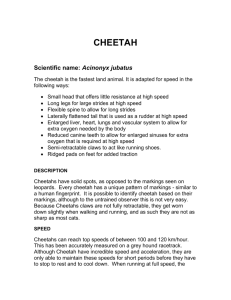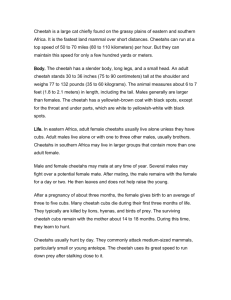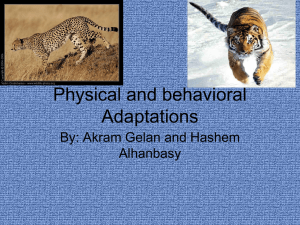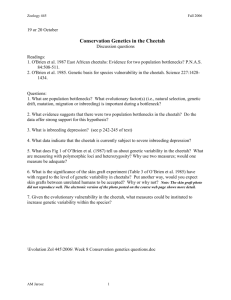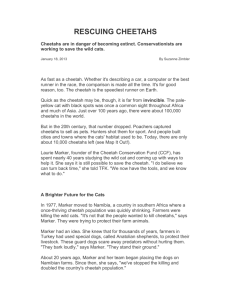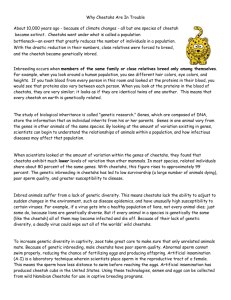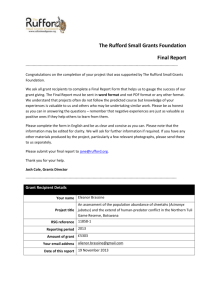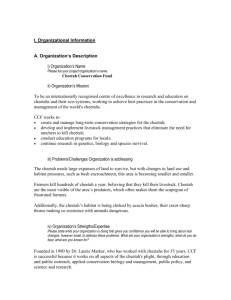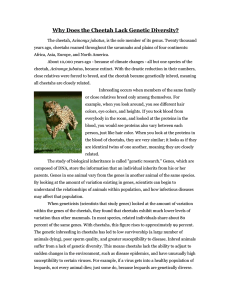Media Release
advertisement
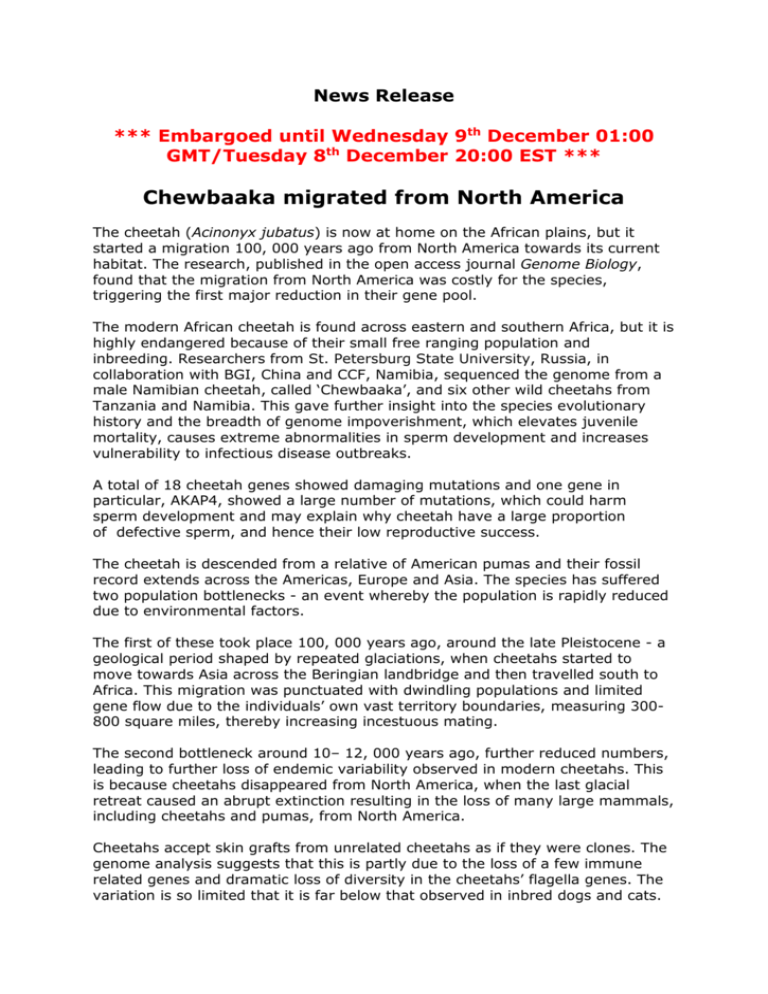
News Release *** Embargoed until Wednesday 9th December 01:00 GMT/Tuesday 8th December 20:00 EST *** Chewbaaka migrated from North America The cheetah (Acinonyx jubatus) is now at home on the African plains, but it started a migration 100, 000 years ago from North America towards its current habitat. The research, published in the open access journal Genome Biology, found that the migration from North America was costly for the species, triggering the first major reduction in their gene pool. The modern African cheetah is found across eastern and southern Africa, but it is highly endangered because of their small free ranging population and inbreeding. Researchers from St. Petersburg State University, Russia, in collaboration with BGI, China and CCF, Namibia, sequenced the genome from a male Namibian cheetah, called ‘Chewbaaka’, and six other wild cheetahs from Tanzania and Namibia. This gave further insight into the species evolutionary history and the breadth of genome impoverishment, which elevates juvenile mortality, causes extreme abnormalities in sperm development and increases vulnerability to infectious disease outbreaks. A total of 18 cheetah genes showed damaging mutations and one gene in particular, AKAP4, showed a large number of mutations, which could harm sperm development and may explain why cheetah have a large proportion of defective sperm, and hence their low reproductive success. The cheetah is descended from a relative of American pumas and their fossil record extends across the Americas, Europe and Asia. The species has suffered two population bottlenecks - an event whereby the population is rapidly reduced due to environmental factors. The first of these took place 100, 000 years ago, around the late Pleistocene - a geological period shaped by repeated glaciations, when cheetahs started to move towards Asia across the Beringian landbridge and then travelled south to Africa. This migration was punctuated with dwindling populations and limited gene flow due to the individuals’ own vast territory boundaries, measuring 300800 square miles, thereby increasing incestuous mating. The second bottleneck around 10– 12, 000 years ago, further reduced numbers, leading to further loss of endemic variability observed in modern cheetahs. This is because cheetahs disappeared from North America, when the last glacial retreat caused an abrupt extinction resulting in the loss of many large mammals, including cheetahs and pumas, from North America. Cheetahs accept skin grafts from unrelated cheetahs as if they were clones. The genome analysis suggests that this is partly due to the loss of a few immune related genes and dramatic loss of diversity in the cheetahs’ flagella genes. The variation is so limited that it is far below that observed in inbred dogs and cats. Tests carried out by the researchers show that the cheetah has lost 90-99% of the genetic variation typically seen in outbred mammals. The researchers conclude that this latest insight into the history and adaptation of the endangered cheetah should be useful in efforts to sustain and increase cheetah population numbers in their present and former range habitats. -ENDSMedia Contact Alanna Orpen PR Assistant BioMed Central T: +44 (0)20 3192 2054 E: alanna.orpen@biomedcentral.com Notes to Editors 1. Genomic legacy of the African cheetah, Acinonyx jubatus Dobrynin et al. Genome Biology 2015 DOI 10.1186/s13059-015-0837-4 During embargo, article available here: http://bit.ly/1XMKyCu Please note that this is an uncorrected proof of the article. There might be small changes in the final copy, but the scientific content will remain the same. After embargo, article available at journal website here: http://dx.doi.org/10.1186/s13059-015-0837-4 Please name the journal in any story you write. If you are writing for the web, please link to the article. All articles are available free of charge, according to BioMed Central's open access policy. 2. Genome Biology serves the biological research community as an international forum for the dissemination, discussion and critical review of information about all areas of biology informed by genomic research. Key objectives are to provide a guide to the rapidly developing resources and technology in genomics and its impact on biological research, to publish large datasets and extensive results that are not readily accommodated in traditional journals, and to help establish new standards and nomenclature for post-genomic biology. 3. BioMed Central is an STM (Science, Technology and Medicine) publisher which has pioneered the open access publishing model. All peer-reviewed research articles published by BioMed Central are made immediately and freely accessible online, and are licensed to allow redistribution and reuse. BioMed Central is part of Springer Science+Business Media, a leading global publisher in the STM sector. www.biomedcentral.com

